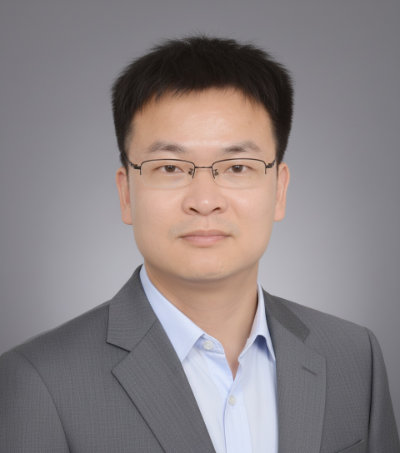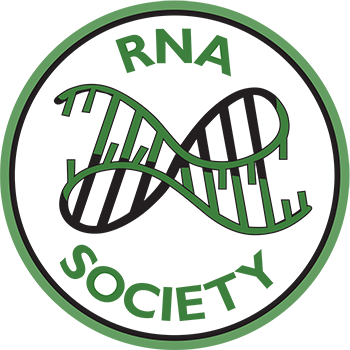Dr. Lin HuangWritten by: Yuk Kei Wan Posted: October 23, 2025  Dr. Lin Huang has dedicated the past two decades to investigating the relationship between non-coding RNA (ncRNA) sequence, structure, and function. He currently he leads a research group at Sun Yat-Sen Memorial Hospital and Sun Yat-Sen University in China. His team focuses on the systematic interrogation of key RNA motifs and the functions of a wide range of non-coding RNAs (ncRNAs), such as riboswitches, ribozymes, microbial ncRNAs, long noncoding RNAs, and circular RNAs. By elucidating their underlying molecular mechanisms, Dr. Huang is keen to understand how specific ncRNAs contribute to the onset and progression of human diseases. Dr. Huang started his academic journey as an undergraduate student in Bioengineering and Biomedical Engineering at Hubei University of Technology, where he recalls having courses leaning towards the application of biological concepts. He trained in ribozyme biochemistry with Professor Yi Zhang at Wuhan University and Professor Xiang-Dong Fu (previously of the University of California, San Diego, now at Westlake University, China), then earned his PhD in structural biology with Professor Keqiong Ye at the National Institute of Biological Sciences in Beijing (now the Institute of Biophysics). These academic experiences strengthened his dedication to understanding how RNA catalyzes reactions and what structural principles enable its diverse functions. After completing his PhD in 2010, Dr Lin Huang moved to the University of Dundee in the United Kingdom to join Professor David Lilley’s lab, where he combined structural biology and biochemistry to study ribozymes and RNA motifs. His collaboration with Professor David Lilley proved exceptionally fruitful: together they dissected the kink-turn (k-turn) motif, now one of the most thoroughly characterized RNA structural elements and a cornerstone of functional RNA architecture, elucidating both its folding propensity and high-resolution three-dimensional structure. Dr. Huang acknowledges each of his mentors for generously providing him with outstanding training in different aspects of RNA science. Specifically citing that their guidance shaped his scientific values and sustained his commitment to RNA research. While he has six papers published in the RNA journal, and six RNA structures from his work have been featured on the journal’s covers, his favorite RNA Journal article remains his first, which was the first to demonstrate that k-turn motifs can fold into protein-bound–like conformations even in the absence of protein, showing strong evidence that their interactions with proteins are more consistent with a conformation selection mechanism rather than induced. As a Principal Investigator at Sun Yat-sen University and Hospital, Dr. Lin Huang works within a strong national hub for RNA research. The institution is home to the Ministry of Science and Technology International Cooperation Base for Long Noncoding RNA and Major Diseases, the Innovation and Talent Introduction Base for RNA Medicine, and the Guangdong–Hong Kong Joint Laboratory of RNA Medicine. Surrounded by vast interdisciplinary opportunities, he collaborates with outstanding scientists across biology, medicine, chemistry, pharmacy, and physics. Dr. Huang is especially grateful for the strong collaborations he has built, particularly within Guangdong, which have helped him and his partners secure significant research funding and infrastructure support. His collaborations extend beyond China, specifically, he has continued to collaborate with his post-doctoral mentor Professor David Lilley, even during the pandemic, and they are now co-organizing the RNA Catalysis Conference in Guangzhou from November 14 to 16, 2025. Dr. Huang is also actively involved in the Guangzhou RNA Club. Since 2022, he has been co-organizing the only RNA Salon series in mainland China with Zhi-Chao Miao (Guangzhou Laboratory), Jianhua Yang (School of Life Sciences, Sun Yat-sen University), and Jinkai Wang (Zhongshan School of Medicine, Sun Yat-sen University). “We host many excellent web seminars each year, and I have learned a great deal from them” Dr. Huang said. A talk by Professor Weihong Tan on aptamers has inspired his lab to explore the topic as a new research direction. Dr. Huang values these activities as they broaden his network, keep him updated with emerging ideas, and catalyze directly new collaborations and research directions. Paying forward the guidance and generosity he received in his early career, Dr. Huang has become an exceptional mentor to his trainees, for which he received an Excellent Graduate Supervisor Award at Sun Yat-sen University. Dr. Huang believes that good mentoring involves patience, responsibility, deep expertise, and individualized guidance. He encourages independent thinking and creativity and supports them both in their research and daily lives so that they can grow comprehensively. Among his many achievements, Dr. Huang notes that his proudest achievement to date is that “[his] master’s students who have graduated so far all have received the Outstanding Master’s Thesis award at Sun Yat-sen University.” Dr. Huang regularly participates in the RNA Society Annual’s meeting, he has attended six meetings: 2013 in Davos, 2018 in Berkeley, 2019 in Kraków, 2021 online, 2023 in Singapore, and 2024 in Edinburgh. He vividly recalls hearing a profoundly moving talk about an RNA therapeutic that enabled a sick child to stand at the 2018 meeting in Berkeley. After the 2018 meeting, he shared a taxi to the airport with a researcher working on mRNA vaccines, well before mRNA vaccines were proven to be a globally transformative technology. In the same year, under the encouragement of Professor Eric Westhof, Dr. Huang also attended the Benasque meeting on RNA structure prediction, which led to several successful collaborations. Despite the bioinformatic nature of the Benasque meeting on RNA structure prediction, “the meetings that benefited me the most were those that [built my] existing skills while pushing me into adjacent areas,” he said. Reflecting on those experiences, Dr. Huang advises younger RNA researchers to attend conferences that push them beyond their comfort zone. Dr. Huang also encourages younger RNA researchers to stay curious and passionate, keep learning and exploring new ideas, and be collaborative and open-minded, not shying away from hard problems. He believes a healthy research mindset is one where you’re genuinely excited to see the results of your experiments every day. Dr. Huang’s favorite RNA is the glmS ribozyme-riboswitch, which is both a ribozyme and a riboswitch, a perfect example of one RNA carrying multiple identities. As a researcher with a long-standing fascination with the k-turn motif, he remarked, “I remain deeply fond of the k-turn motif. Despite comprising only about 20 nucleotides, I have studied it for 15 years, and I expect it will continue yielding insights for years to come.” Follow Dr. Lin Huang on X (https://x.com/linhuang2008) and check out his lab webpage (https://lab.rjmart.cn/#/10109/NASRG/) to stay updated with his latest research insights and experiences. |
